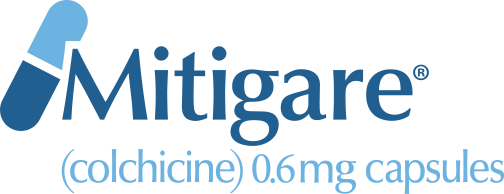
If you suffer with frequent flares and are thinking it might be time to change how you manage your gout, you’re not alone. A 2018 treatment survey of patients at a community-based clinic found that, for more than half of respondents, their #1 goal was to prevent or better manage gout flares and improve joint function.1 How about you? Could setting a gout management goal help you live better with the disease?
Talk with your doctor first
If you are thinking about setting a gout management goal, be sure to talk with your doctor beforehand. Your doctor is most familiar with your individual gout diagnosis, as well as any gout medications you take to control the disease. If you are not sure where to start making improvements, your doctor may be able to recommend a gout management goal for you to work toward.
Consider a SMART gout management goal
The SMART acronym for goal setting is a tool you may find useful as you decide on your gout management goal.2 SMART goals are Specific, Measurable, Attainable, Realistic and Time-Bound2:
Specific
Be clear about what you want to achieve. For example, “eat red meat no more than once a week” is a better gout management goal than “eat red meat less often.”
Measurable
Make it measurable. Say your gout management goal is to ride the exercise bike for 30 minutes at a time at least four times each week. You can check the days off on the calendar to measure your progress.
Attainable
Be sure your gout management goal is something you can genuinely expect to achieve. If you hate vegetables, for example, it’s unlikely that you will successfully increase the number of servings you eat of them each week.
Realistic
Be ambitious, but practical. Maybe your gout management goal is to lose 10 pounds. If it is, be sure you give yourself a reasonable amount of time to achieve it.
Timely
Create a sense of urgency and add a level of accountability by giving yourself a deadline to achieve your gout management goal. Just be sure it’s truly doable (see “Realistic,” above).
Overcome obstacles
Achieving most goals means overcoming obstacles, and sometimes you’ll have to work around them. Keep the following in mind when you encounter roadblocks on the path to achieving your gout management goal3:
- Be willing to consider different ways to reach your gout management goal. When you’re open to new ideas and new solutions, you sometimes find a better way to succeed.
- Find meaning in the obstacles you encounter. Ask yourself, “What is the lesson in this?” Consider what you can learn from the obstacles you’ve faced.
- Consider seeking input from others. Your friends and family may be able to offer helpful perspectives when you’re faced with a roadblock.
- Accept mistakes. Acknowledge them, figure out what to do next and move on. Making mistakes is part of being human. Don’t let them stop you from achieving your gout management goal.
Stay focused
For most of us, the diversions and distractions of daily life can make it a challenge to stay on top of our goals. Here are some tips to help you stay focused on your gout management goal:
- Break big gout management goals into smaller ones. When you set priorities and achieve smaller goals, the process feels more manageable and less intimidating.
- Evaluate your progress. Monitor your progress regularly to see what’s working and what’s not. Make adjustments if you need to.
- Celebrate your successes. Taking pride in your accomplishments—even the small ones—can boost your confidence and motivate you to keep working toward your gout management goal.
NOTE: This article was not written by a medical professional and is not intended to substitute for the guidance of a physician. These are not Hikma’s recommendations for gout flare prevention, but rather facts and data collected from various reliable medical sources and guidelines. For a full list of resources and their attributing links, see below.
